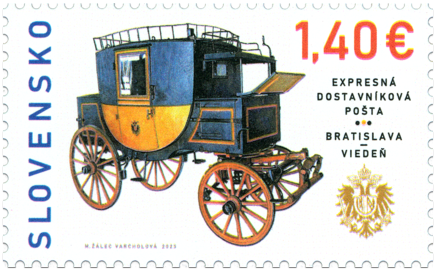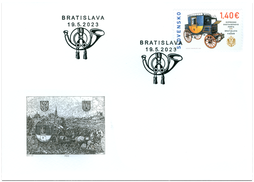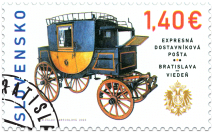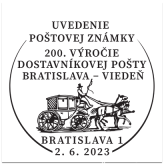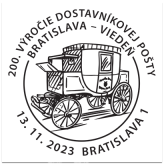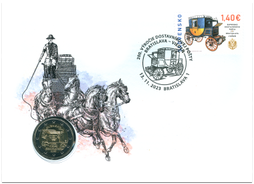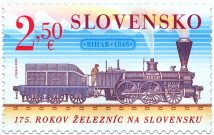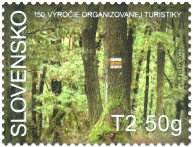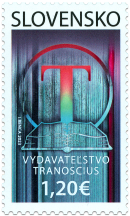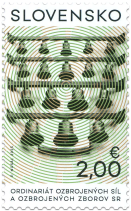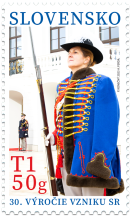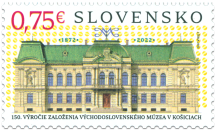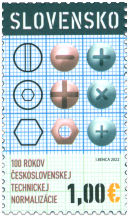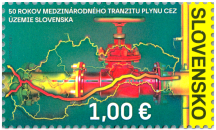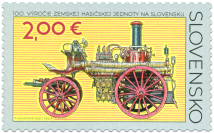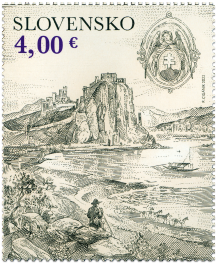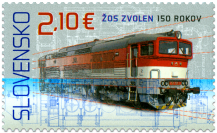794 Date of issue
19.05.2023 Face value
1.40 € Sell price
1.40 €
In Austrian journal MITTHEILUNGEN DER KAISERLICH-KÖNIGLICHEN GEOGRAPHISCHEN GESELLSCHAFT (Notices of the Imperial-Royal Geographical Society) from 1861, it is stated: “On 3rd May 1823, the first express coach went from Vienna to Brno, the second, to everyoneʼs astonishment, on 29th July 1823, made the journey from Vienna to Prague in 36 hours! On 1st October of the same year, the route to Bratislava was opened...” This passage, quoted from the document, recalls the important reform in the coaches used to transport the mail, which was implemented by the Habsburg Monarchy in 1823. It also concerned the transport of passengers and mail between Bratislava and Vienna.
As happened in the whole of Europe, the Habsburg Monarchy also experienced economic development triggered by the Industrial Revolution at the beginning of the 19th century. It had an impact on the growth in the movement of people, goods and mail deliveries. However, despite the intensive construction of roads with reinforced and drained surfaces, fixed links were still slow, so inevitably the time to speed up personal mail transport arrived. Max Ottenfeld, the new director of the mail vehicle administration, was entrusted with the reforms. The result of his efforts was the introduction of the so-called mail express coaches (eilpostwagen). Structurally they were very well-built with elliptical springs and were mostly drawn by four or six horses. This type of coach was able to attain, for that time, the extraordinary speed of 12 kilometres per hour. The first test run of the mail express coach took place on 3rd May 1823, on the Vienna – Brno route. It covered the distance of 19 postal miles (approx. 144 km) in 14 hours. The responsible authorities considered it to be a successful experiment and thus in the same year these coaches also started to operate on the Vienna – Prague route and the Vienna – Bratislava route, where the journey lasted about 6 hours.
The success of Ottenfeldʼs reforms primarily consisted in the elimination of long stops along the routes, uninterrupted progress at night, which Ottenfeld managed to enforce despite the initial resistance of his superiors, and last but not least, a regular and comfortable ride in coaches with good suspension.
Leo Lichvár
Show less© 2024 POFIS - Postal philatelic service. All rights reserved

